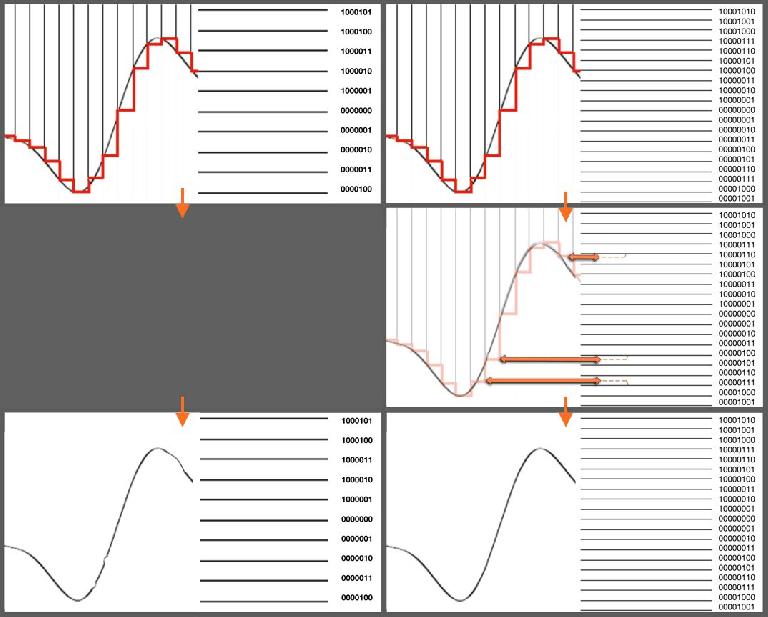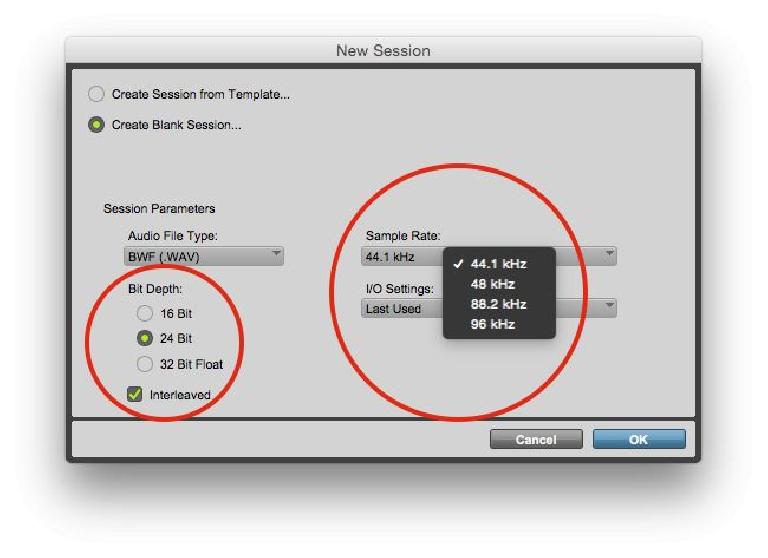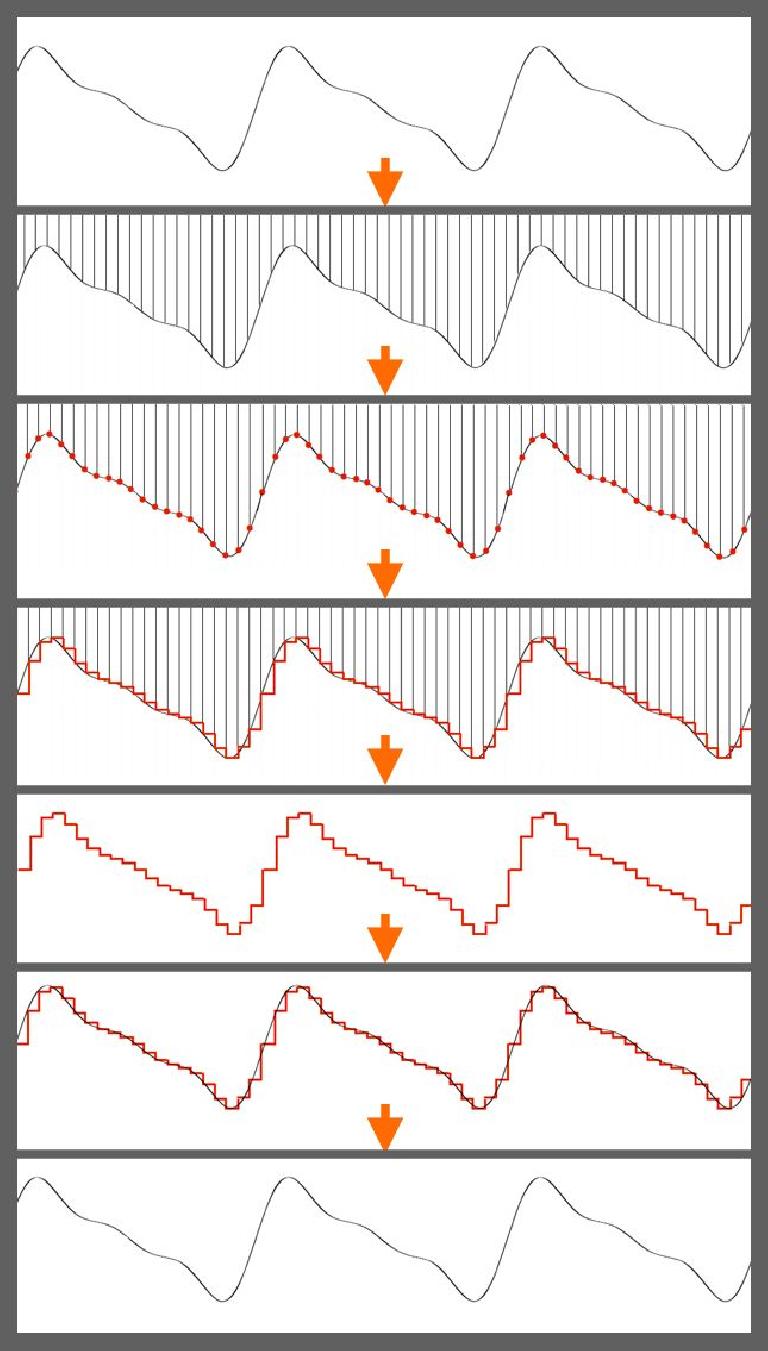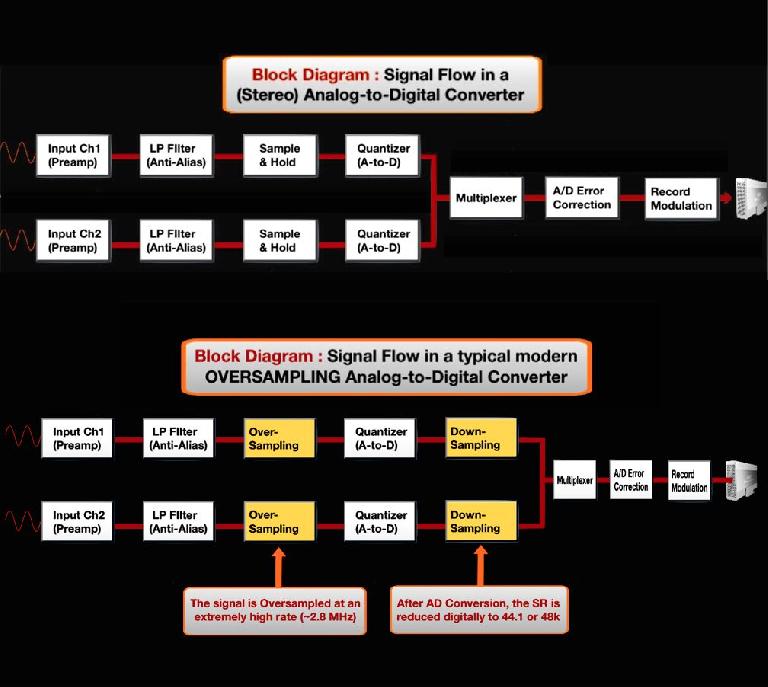Одним из наиболее спорных дебатов в аудио индустрии центрах по всему цифрового аудио резолюции. Это компакт-качество все еще достаточно хорошо, или все должны цифровой звук придерживаться высших разрешением вариантов, которые теперь доступны? Хорошо, спойлер оповещения
The (Very Simplified) Basics
Два тесты цифрового аудио качества являются частота дискретизации и бит Разрешение. Нижняя частота дискретизации
В течение многих лет, эти две контрольные были стандартизированы. CD
Please Sir, May I Have Some More..
Но если исходный стандарт (ы) встретились (по крайней мере восприятия) теоретические требования, почему призыв к более высоким разрешением? Это действительно необходимо, чтобы сделать использование более высоких разрешениях Bit имеющихся в настоящее время
A Bit of This, a Bit of That
Во-первых, самая простая часть
Тем не менее, разница не так велика, как можно было бы ожидать
И все же, все (по крайней мере, все плюсы) запись 24 бит! Зачем? Ну, я думаю, ответ, почему нет? Разрешение 24-бит оленья кожа
Но то, что обо всем гудением о
Sample This
Когда дело доходит до доступных выше Частота дискретизации (88.2k, 96k, 176.4k, 192k), есть
Цифровой аудио теория на самом деле довольно элегантный
Но для достижения этой цели, не слышимым артефакта
Современные цифровые преобразователи, на протяжении нескольких лет, на самом деле пробы при значительно более высоких ставок, давно устраняя необходимость для тех неприятных BrickWall фильтров. Но частота дискретизации полученного цифрового аудио файл может все еще быть 44.1k или 48k, потому что более высокие частоты дискретизации аудио
Но, когда вы делаете запись 96K, вы
The Ultrasonic Conundrum
Ну, это одна из тех областей, где хорошие люди
Golden Ears..?
Тестовые измерения может
Wrap-Up
В конечном счете, люди будут продолжать использовать все резолюции по их мнению, это необходимо. Хотя почти все проекты про-уровне являются 24-бит, выбранном диапазоне от более традиционной 44.1 Образец Цены и 48k на 96k, а иногда даже 192k (хотя некоторые уважаемые инженеры считают, что 192k более чем что-либо реклама).
Иногда выбор сделан для вас






 © 2024 Ask.Audio
A NonLinear Educating Company
© 2024 Ask.Audio
A NonLinear Educating Company
Discussion
I have actually only done the first part with most of my (soft) synths and have been surprised how well it sounds with synth sources at at 88..2 in a 44.1 project.
You're right, software instruments are one application where oversampling can potentially make a more noticeable difference—especially with creative applications that involve more extreme sample manipulation, which can sometimes clearly benefit from higher sampling rates. I didn't get into that for two reasons—the article was intended to be focused on playback/distribution more than processing, and it was already long and technical enough (especially before I edited it down!).. ;-)
As I've always understand it, most plug-ins that oversample (for maximum clarity with certain kinds of intensive processing, like some modeling emulations) will be fine doing that internally (if you enable it), regardless of the session settings..
I also didn't get into the whole issue of people listening to all those pristine hi-res audio productions as MP3s/MP4s, but I guess that's an issue for another day.. ;-)
Cheers,
Joe
Want to join the discussion?
Create an account or login to get started!